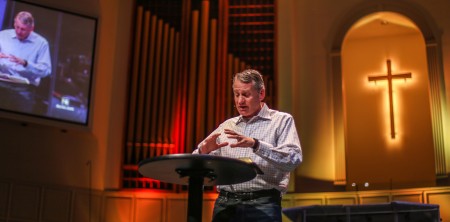
(This is a guest post written by my friend Matt Lombardi. Matt has launched a new company called Shaar that I believe has great potential to help churches and ministers, by providing freelancers for every area of ministry. Check them out HERE.)
If you’re a pastor, I’m positive you’ve been bombarded with more articles and resources about reopening than you can read in the next 5 years. Your services are infinitely more complicated, but you’re still being pressured to maintain an online presence. And there are also millions of articles on that, if you’re interested.
If you feel like you are working double time, you are. You are effectively running two Churches.
We are all still in ministry for the same reasons: Spread the Good News. Make disciples. While the “Why” of the Church has not changed, the “How” certainly has.
So how is the Church going to function in the future?
Here are 3 things to consider to help you put that into perspective.
1. The future is online.
If you haven’t given much thought to how you stream your services, use social media or create content to be viewed online, you should probably start. These things are likely going to expand. This is an opportunity for the Church.
People can engage with our Church from all over the world. They can interact with the Church on a daily basis. People can connect with the message of Christ in a variety of ways.
You might find your employees online or find freelance work online. There may even be interviews online via video before people ever come into your Church. You might look up your candidate’s LinkedIn profile instead of their resume.
2. The future is distributed.
Distributed means that your team may not all work from the same place. Some or all of your team might be remote.
Distributed means that the Church receptionist may take calls for the Church while she’s home with her kids. Remote meetings might happen on a video conference instead of in person. Much of the work that people did sitting at a desk in the Church, they will do from their home office or the kitchen table or the park.
Distributed means that the Church can fully function and fulfill its mission without meeting in person. That’s not to say the Church won’t meet in person. It means that someone who would not be able to attend your physical meetings could find your Church online and be fed without needing to step into the building.
3. The future is project-based.
This may sound like a weird one.
Things like websites, graphics, social media posts, videos, podcasts and written content are being used to accomplish the mission of the Church. Preparation for a video is different than when you just show up to preach a sermon. There is an extra workflow that needs to happen to complete that project.
While Churches will always need pastors and support leadership, they may not be able to afford someone on staff to deal with the project needs of the Church. That’s where the gig economy comes to the Church’s rescue with freelance solutions. When you have a project, you outsource it to get exactly what you need done by a professional in that field.
Recently our team at Shaar launched a huge study into the Future of Church Staffing. We’re looking at trends in how the church will “go to work” in the days ahead. Shaar is diving deeper into topics like remote work, how churches look to staff up in the digital space, and how churches prioritize tech-driven skill sets. By the way, we are randomly giving away Amazon gift cards to participants.
To participate in the study, follow THIS LINK.






